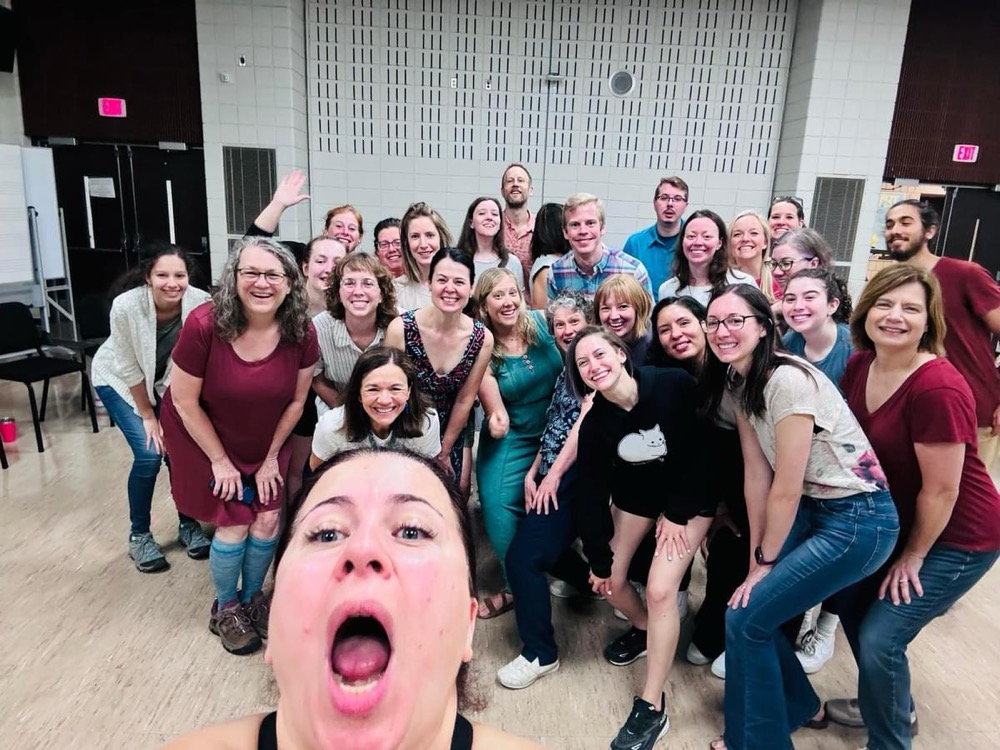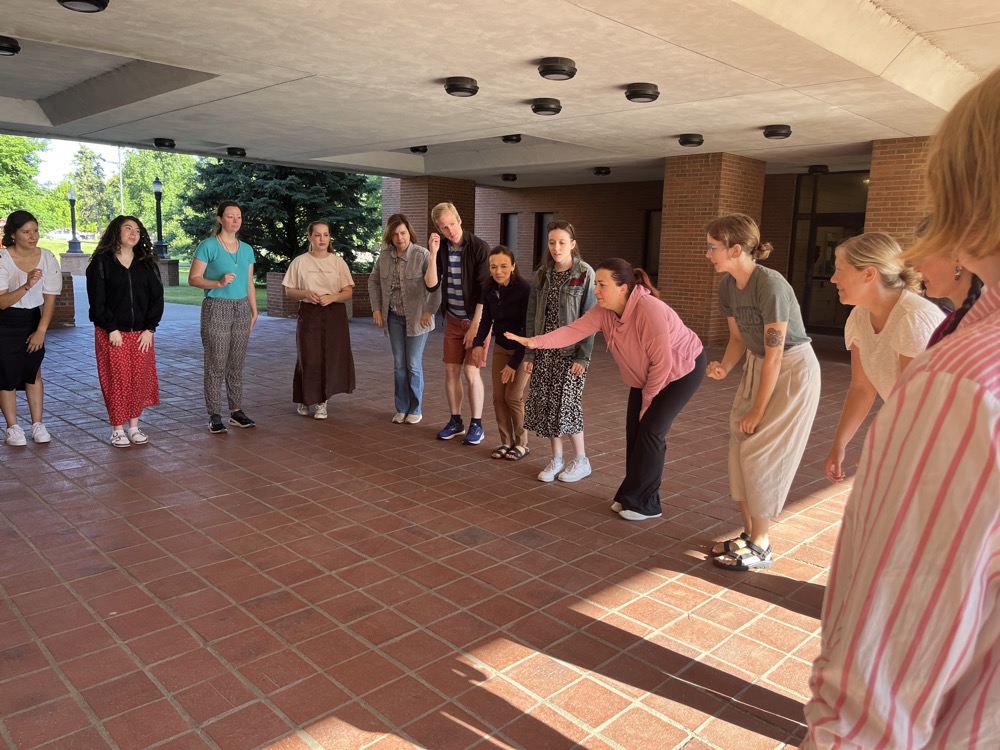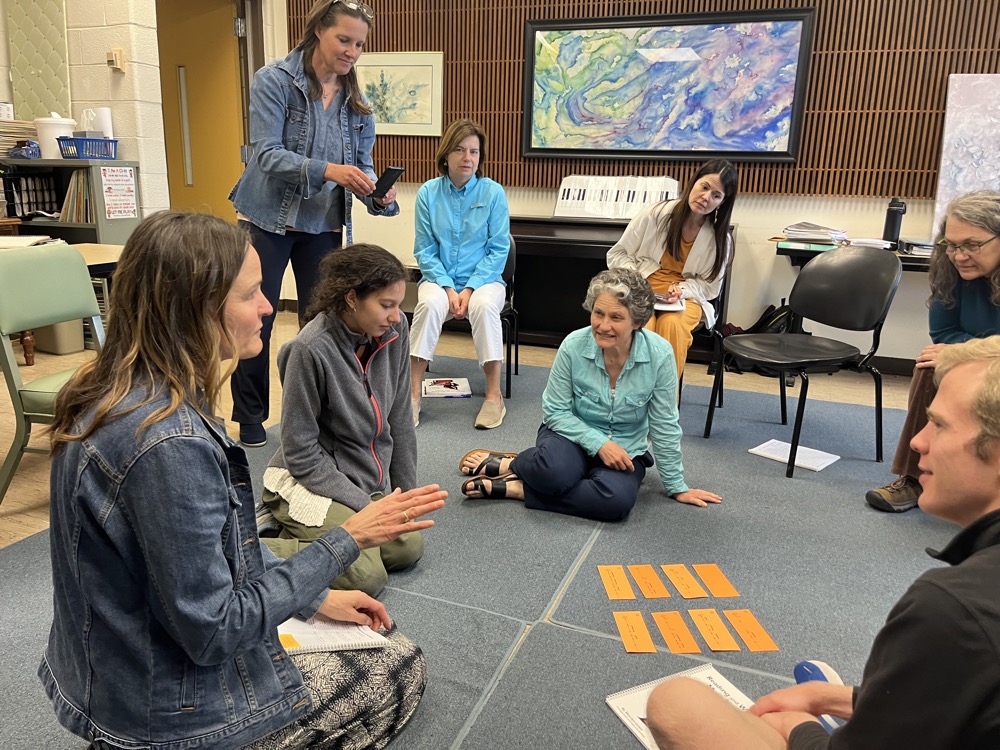Two days ago was the wrap-up of a Piano Level 2 Professional Development Levels Course (PDLC) through the Gordon Institute for Music Learning held at Eastern Michigan University, just 20 minutes from my home. It was such a great experience, and my heart is full.
We started each morning with Musicianship Time with Natasha Sigmund, GIML faculty member in Early Childhood Music.

During this class, we moved and listened to songs and rhythm chants in a variety of tonalities and meters, and responded improvisationally as directed. We did so using at times a neutral syllable (like “BAH”) and using moveable DO (with LA-based minor) solfege and Gordon-Froseth rhythm syllables to help us associate the tones and durations to the context of each meter/tonality. My favorite part is when we improvised vocally on harmonic progressions. All of this is done by ear, a cappella. It’s amazing how good your “ear” (audiation) gets with this approach!

After Musicianship Time, we broke out into separate classes according to each certification strand: Early Childhood Music Level 1, Piano Level 1, and Piano Level 2.

Our Piano Level 2 instructors were Dr. Jenny Fisher and Janna Olson — both fabulous and teachers and human beings I admire. They each have a deep understanding of Edwin E. Gordon’s Music Learning Theory (MLT) as well as many years of practical experience applying it to piano instruction.

In addition to our lecture-discussions, we also did quite a bit of peer teaching and teaching demo observations using Marilyn Lowe’s Music Moves for Piano series.

Because I live local to EMU, I offered up my home for an informal potluck dinner on Saturday evening.

It was fun being around fellow music educators from across the U.S. and Canada who share a passion for understanding music learning, and a pleasure to welcome them into my home.

I’m grateful for the fabulous GIML faculty who are dedicated to carrying on the legacy and body of work of Dr. Gordon and Marilyn Lowe. Pictured below are Hannah Mayo and Krista Jadro, who taught Piano Level 1 (and are co-hosts of a fabulous podcast called Keys to Music Learning), Natasha Sigmund, Jenny Fisher, Sarah Boyd (interning this year to become a new member of the GIML piano faculty), Carin McEvoy from the Early Childhood Music faculty, and Janna Olson.

This marks my fourth PDLC (I blogged about traveling to Boston in 2016 to take Piano Level 1, I took Early Childhood Music Level 1 in 2017, and I re-took Level 1 in 2023 last summer), and I know it won’t be my last! I highly recommend these summer certification courses (as well as the membership and other offerings by the Gordon Institute for Music Learning) to any music educator.

What’s inspiring YOU so far this summer? What moments, big or small, are filling your bucket? I’d love to hear. Leave a comment below this post!
Related:
- My First Encounter with Dr. Edwin E. Gordon and his Music Learning Theory (MLT)
- What is “Music Learning Theory”, Exactly?
- What is Audiation, Exactly?
- YouTube: Music as a Language by Victor Wooten – A discussion of the similarities between learning language and learning music.
- Recommended Reading From Edwin E. Gordon’s Books on Music Learning Theory (MLT)
- Join the Facebook group, “Edwin E. Gordon and Music Learning Theory for Piano Teachers.” All welcome! Visit the group here and click the “Join Group” button to request to join the group.


Thank you so much for your report on the Gordon institute. What an intriguing idea. We actually have used audiation in our choir classroom quite a bit. it’s an excellent way to match pitch and get the road map of a piece. I do have a question about the cost of the method book. Having used the Faber piano adventures series for years, I found the cost of the Music Moves method books prohibitive for my area (small town, depressed economy). Are the books more of a teacher guide to the method that can be used for an extended period? I would love to preview one as I find the concept interesting for my very young students. I would love your thoughts on this.
Hello Charlotte, thanks for your comment. How great to hear you’ve found ways to use audiation in your choir classroom!!
Regarding your question about books… How about investing in a couple of studio copies to loan out to your students? I find this a good way to get more life out a book and make the expense more affordable. This also helps me feel free to use whatever materials I deem best for a given student. 🙂
By the way, Marilyn Lowe’s Keyboard Games, Books A and B each contain 30-some pieces. It depends on the student of course, but my students generally learn 1-2 pieces per week (alongside lots of listening assignments and movement activities). I think the time and cost it takes a student to get through Book A is not far off from the time and cost required to get through the Faber Primer level (Lesson + Performance + Theory).
Also wanted to add, in case you are serious about ordering some books from https://musicmovesforpiano.com — You can take a look at some preview pages there. And I definitely recommend investing in the Keyboard Games Teacher’s Guide book. It’s like a menu of ideas for what to do during the lesson to guide students to audiate the resting tone and macrobeats/microbeats. If you decide to order and are curious to know more about lesson planning for a Keyboard Games class/lesson, feel free to email me via my contact form and I’ll give you some tips for getting started! It’s definitely a different approach compared to conventional piano teaching, but it’s well worth the learning curve!
Thank you, Joy! This was lovely to see and read – – So many familiar faces and I am happy to see the new folks. -Nancy Anderson
It’s so wonderful to hear from you, Nancy! Thanks for your note, and I hope all is well with you!